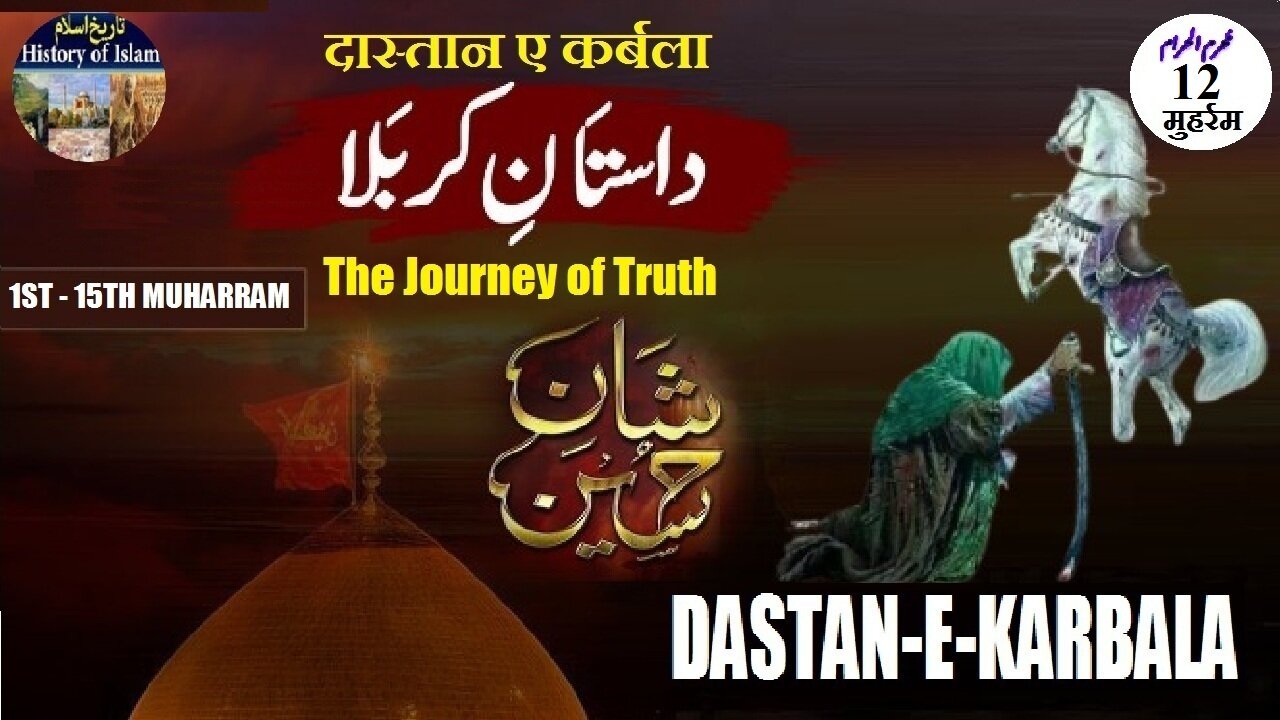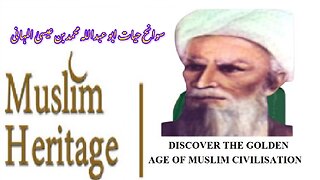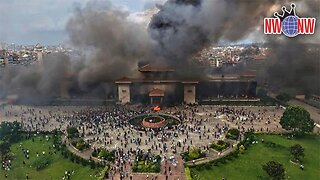Premium Only Content

12th Muharram Dastan-e-Karbala मुहर्रम दास्तान-ए-कर्बला بارہویں محرم الحرام داستانِ کربلا
@islamichistory813 #muharramalahram #muharram #karbala #dastanekarbala #journeyoftruth #imamhussain #ashura #shia #history #islamic #martyrs #karbala #story #hussain #islamic #sacrifice #shia #commemoration #karbala #lessons #1st #to 15th #muharram #truthofkarbala
12th Muharram Dastan-e-Karbala The Journey of Truth
Asslamoalaikum, The tragedy of Karbala is one of the most heart-wrenching and powerful chapters in Islamic history. Occurring in the sacred month of Muharram, this historic event marks the ultimate sacrifice of Imam Hussain (RA), the beloved grandson of Prophet Muhammad (SAW), who stood fearlessly against tyranny and injustice. On the plains of Karbala, in 61 AH (680 CE), Imam Hussain, along with his family and a small group of loyal companions, faced the brutal army of Yazid. Denied water, surrounded by enemies, and offered no escape, they chose martyrdom over surrender, preserving the values of truth, justice, and faith.
This video takes you through the sorrowful yet inspiring journey of Karbala—each day of Muharram carrying profound pain and unmatched bravery. From the departure of Imam Hussain from Madinah to the heart-shaking events of Ashura, we honor the legacy of those who gave their lives for Islam.
So sisters brothers friends and elders today we will be the described events of 12th Muharram in this video.
The 12th of Muharram came with the cold reality of loss and the heavy burden of survival for the remaining family members of **Imam Hussain (A.S)**. The battlefield of Karbala, now silent and stained with the sacred blood of martyrs, remained a haunting landscape of oppression, sacrifice, and unmatched valor. The women and children of the **Ahlul Bayt**, now taken as prisoners, were forced to leave the battlefield behind without being allowed to bury their loved ones. Their hearts bled not only from personal grief but from witnessing the brutal violation of every sanctity — the desecration of the bodies of the Prophet’s family, the looting of their belongings, and the unbearable humiliation that followed. Yet, even in this darkest of hours, their spirits remained unbroken, and the flame of **Imam Hussain’s (A.S)** mission continued to burn in the hearts of the captives.
On the 12th of Muharram, **Umar ibn Sa’ad**, commander of Yazid’s army, finally gave reluctant permission for the **burial of the martyrs**. Up until this day, the bodies of Imam Hussain (A.S), his sons, brothers, and companions had been lying on the burning sands of Karbala under the scorching sun, exposed and dishonored. It was not Yazid’s army who buried them — they had no interest in honoring the fallen. Instead, it was the **tribe of Banu Asad**, local villagers of the area, who came secretly and, with the help and guidance of **Imam Zain-ul-Abideen (A.S)**, buried the bodies of the martyrs. Imam Zain-ul-Abideen (A.S), though sick and in chains, miraculously reached the battlefield under divine guidance, identified the bodies, and helped them dig the graves. **Imam Hussain (A.S)** was buried where he was martyred, while others were laid to rest nearby. **Abbas (A.S)**, the loyal brother, was buried beside the Euphrates where he fell in his attempt to fetch water.
This burial was done with love and deep sorrow, under the cover of darkness and secrecy, to avoid the wrath of Yazid's army. It was a moment of both closure and eternal pain. The small, humble graves became sacred symbols — the beginning of what would later become the **Shrine of Karbala**, visited by millions in remembrance of truth and sacrifice.
Meanwhile, the caravan of captives — the noble women and children of the Prophet’s family — was being prepared to be taken to **Kufa**, the seat of **Ubaidullah ibn Ziyad**, governor of Yazid. The 12th of Muharram marked the start of their long and painful journey of **captivity and humiliation**, where they would be dragged through the streets of cities in chains, mocked, and insulted by the very people who once claimed to follow the teachings of Islam. **Lady Zainab (S.A)**, though heartbroken, rose as the leader of this caravan. Her resilience, wisdom, and unmatched eloquence would soon shake the palaces of power. She began to plant the seeds of Hussain’s revolution through her speeches and presence.
During this time, **Imam Zain-ul-Abideen (A.S)**, the only surviving adult male from the family of Hussain (A.S), continued to represent the Imamat with dignity despite his illness and chains. Though weakened physically, his spiritual light shone bright. Together, he and Zainab (S.A) took on the mission of carrying the message of Karbala forward — that **truth must be defended**, no matter the cost, and **oppression must be exposed**, even if the oppressor wears the cloak of religion.
The 12th of Muharram was not only a day of mourning but a transition — from **martyrdom to message**, from **tragedy to revolution**. Though the bodies had fallen, the truth had risen. The captives were not just survivors; they were the voice of Karbala, chosen by Allah to awaken the sleeping conscience of the Muslim Ummah. Their journey, which began in blood and fire, would echo through centuries, inspiring generations to stand with justice, remember Hussain (A.S), and uphold the values of Islam even in the face of tyranny.
As we remember the heartbreaking events of Karbala, let us not only remember the sacrifices of Imam Hussain (RA) and his companions, but also strive to embody their values ??of truth, justice, and unwavering faith. Their legacy is a timeless reminder that standing up against oppression is the duty of every believer. May their courage inspire us to live with dignity and righteousness. Amen.
Allah Hafiz
=========================
-
 6:59
6:59
ISLAMIC HISTORY
18 hours agoBiography Abu Abdullah Muhammad ibn Isa al-Mahani سوانح عمری ابو عبداللہ محمد ابن عیسی المہانی
16 -
 17:22
17:22
Adam Does Movies
10 hours agoIce Road: Vengeance - Movie Review
181 -
 45:05
45:05
Uncommon Sense In Current Times
15 hours agoDarwin vs. DNA | Dr. Nathaniel Jeanson on Creation Science, Evolution & the Case for Genesis
7.09K -
 32:19
32:19
The Lou Holtz Show
12 hours agoThe Lou Holtz Show S2 EP18 | Danica Patrick on Fearlessness, Faith & Finding Purpose #podcast
251 -
 23:41
23:41
The Official Corbett Report Rumble Channel
8 hours agoDiscord Democracy is Coming For Us All! - New World Next Week
1.1K5 -
 49:14
49:14
CharLee Simons presents DO NOT TALK
1 day agoSCREW YOU, ZUCKERBERG (Sam Anthony is back!)
80 -
 1:04:26
1:04:26
SinCityCrypto
16 hours ago $0.05 earnedAltcoins About to EXPLODE (ETF Approvals)
531 -
 LIVE
LIVE
Times Now World
2 days agoLIVE | Putin in Military Gear Leads Massive Zapad 2025 Drills With 100,000 Troops | TIMES NOW WORLD
1,517 watching -
 15:03
15:03
Nate The Lawyer
1 day ago $0.28 earnedFirst Former Illegal Alien Elected To City Council Deported To Prison By Feds. @DLAW_
25.2K13 -
 28:26
28:26
DeVory Darkins
13 hours ago $12.94 earnedDemocrats BEG FOR MERCY after Kimmel suspension as Trump drops bomb on terrorist left
154K86